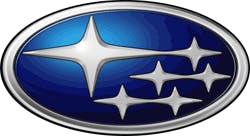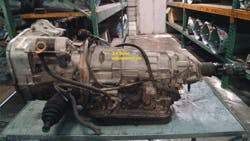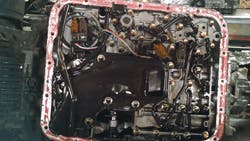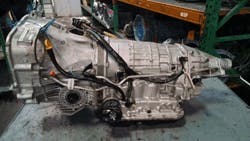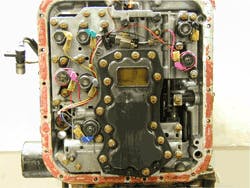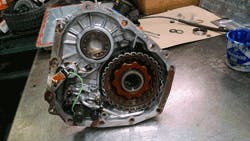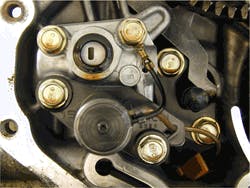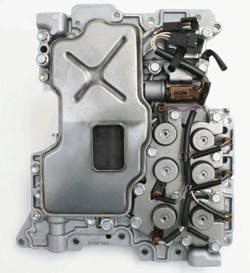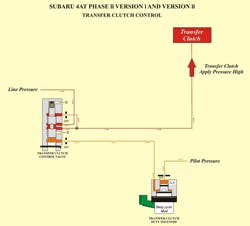Often times I become curious as to the origin of a phrase or a name. This frequently is prompted by the different names I continually see given to vehicles. On one occasion after a day’s work, several of us here at ATSG sat around talking, and I brought this subject up. This provoked a comical story of wit among us using the names of vehicles.
Like This Article?
Check out related training at
It was something like a Grand Caravan made a Voyager to Daytona to enjoy a Sebring, then on to Town and Country including 5th Avenue and Aspen and all the way to the Pacifica.
They had quite a Vision. Grand Cherokee and Comanche argued with the Commander about using a Compass as opposed to doing a Valiant Sundance.
Others just wanted to Cruise using Satellite communication to Charge ahead with Nitro enjoying the Airflow. Some said this was a Cirrus and took the Concorde with pilot LeBaron to Monaco and then Windsor enjoying a Magnum of wine on the way. When the Grand Caravan suffered an Intrepid brake problem with the Caliber, they took the Liberty to go to a Premier show watching a Patriot’s wife be bitten by a Viper, to which he Avenger by a heavy Ram to its head. This was quite coincidental, since the two ended the day romantically enjoying the astronomical sign Aries in the night sky, which is the symbol of the Ram.
Founded in 1953, Subaru made its presence known here in the United States 15 years later. Interestingly enough, one year after that (1969), we landed on the moon, which I am sure had a better view of the seven sisters. They might have even seen the invisible sister from there.
The car that landed here on U.S. soil was called the Subaru 360. It took on the nickname “Ladybug” due to its similar appearance. (It was also called Ladybird in Europe). It had an air-cooled 2 stroke inline 2 cylinder 356 cc engine mounted transversely in the rear. Sort of like its competitor, the VW Beetle called the Bug, it had a four-speed manual and optional three-speed-based “Autoclutch” transmission. It was called an Autoclutch because it was a manual transmission that eliminated the clutch pedal using and electromagnet to operate the clutch. That makes today’s Sequential Manual Gearboxes with computer controlled slave cylinders not such a new idea. It wasn’t until 1975 that Subaru began using an automatic transmission. It was a 3-speed by JATCO called the 3AT. By 1983, there was an electronic version of this transmission called the 3EAT with a Single-Range 4WD package.
It was an interesting transmission to say the least. I remember how the engine oil cover would leak; oil would drip down and get the brushes soaked with oil. This prevented the metal powder to become magnetized causing the transmission to not move. Anyway, primarily a FWD transmission, the Lineartronic CVT doesn’t come close to this design. Externally, the design looks similar to the familiar 4EAT transmission (Figure 6). Internally is a different story all together. The only similarity would be the transfer clutch supplying torque to the rear wheels.
One of the common complaints we have had on all three style 4EAT transmission is tight corner braking. This is when the wheels hop and skip across the pavement during low speed turns. This is typically caused by a malfunction in the AWD operation of the transmission.
Phase 2 Version 2 is a completely different story. The entire hydraulic control of the transmission changed affecting computer hardware, software, solenoids, valve body and case passage. Part of these changes eliminated the little transfer clutch valve body assembly and relocated the solenoid to the main valve body (Figure 9). This solenoid can be quickly identifies as it is the only one with a green connector (Figure 10). This is a Normally Vented solenoid which means it needs to be energized to engage the transfer clutch; just the opposite of the two previous designs. This also eliminated the AWD fuse holder in the engine compartment due to this strategy change.
connector has the same snout diameter as the brown connector solenoids (1.365 inches). This means “self-inflicted transmission malfunction” as the brown and green solenoids can be poked into the wrong location. So care needs to be given here when changing solenoids.
Figure 12 is a simple hydraulic schematic showing the operation of this new design transfer clutch solenoid. It receives pilot pressure through a .050-inch orifice into the tip of the solenoid’s snout. When the solenoid is off, the supply pressure is blocked from passing through the solenoid. When the solenoid pulse width modulated by the computer, pilot pressure passes through the solenoid to the transfer clutch control valve. This valve is being held closed by spring tension. Along side the valve is a line pressure supply waiting to be routed to the transfer clutch. When solenoid feed oil enters the face end of the valve opposite the spring end, pressure builds to overcome the spring force stroking the valve. Once the valve moves, line pressure is then directed to the transfer clutch. The way the solenoid strokes the valve, it allows for a controlled apply of the clutch as well as a controlled release of the clutch.
The failure that can occur here is the solenoid mechanically fails where it will apply the transfer clutch without it being energized. This happens to be a common problem with this solenoid. The bigger problem is the solenoid cannot be purchased separately. The entire valve body assembly needs to be purchased which includes all the solenoids listing for a bit over $900. Watch for an in-car repair with a work around for this dilemma which will be in a weekly March 2015 newsletter.
Does anyone know what Impreza means? Someone told me it is a Polish word for “show.” Maybe it is referring to the Premier show with the Patriot and his wife. If so, the seven sisters should be attending. My guess is that with their Legacy they might be going Crosstrek through the Forester from the Outback.
About the Author
Wayne Colonna
POWERTRAIN PRO Publisher
Wayne Colonna is president of the Automatic Transmission Service Group (ATSG) in Cutler Bay, Fla., and a frequent speaker/instructor for transmission training around the globe.

